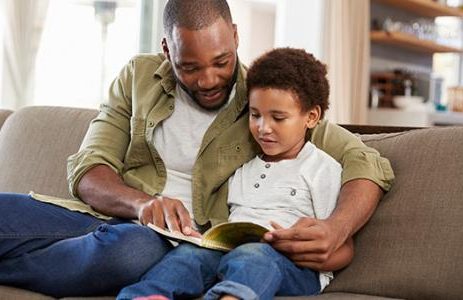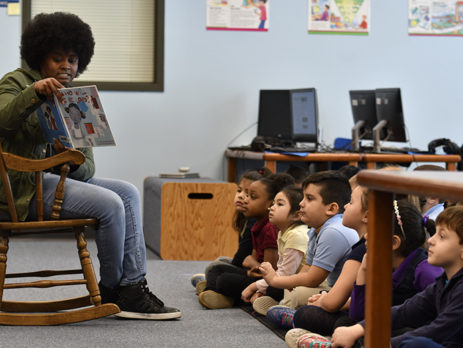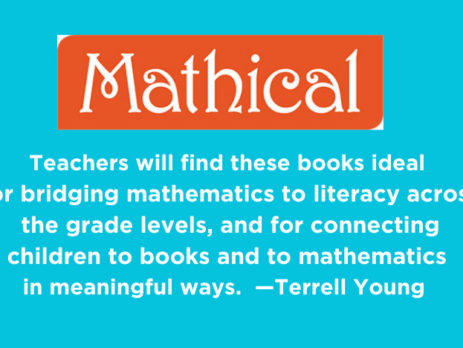resources for parents and students
Reading
Science / Social Studies
Learning Games
Math
Read Anything and Everything with Your Child
At school, children are introduced to different kinds of writing — storybooks, books about topics they are studying, magazines, how-to guides, recipes, and content on the web. These are the kinds of writing that children and adults read in school and in daily life. You can read anything and everything with your child. This helps your child learn how and why writing and reading are important and useful. Here are some ideas.
Read magazines and newspapers. Talk about the photos and illustrations. Find an article by using the table of contents page. Discuss the different sections, such as sports, local news, and advertising.
Write a letter together. Use it to say “Thank you,” “I hope you feel better soon,” or just “Hello.” Explain why you write the date and include the name of the person whom you are writing to. Sign it and have your child sign her name too.
Follow a recipe in a book or instructions on a food container. Work as a team to gather the ingredients. Then follow the directions step-by-step. Ask your child to help you figure out what comes next.
Read a variety of books. At the library, help your child pick storybooks, nonfiction books, and books to read together. Your child might choose a book of poems or a book with lots of detailed pictures to look at together.
Family Literacy Matters
Families offer so much to young children who are learning about the world. Children are learning routines, rules for home and school, and their place in this world. As early childhood professionals we know, a great deal of learning for children happens outside of the school building. This happens through after-school activities, hobbies, libraries, religious observances, family reunions, daily time spent with family members, and vacations.
The 21st century has created even more opportunities for children to have contact and to learn from various members of their families. As educators, it is of vital importance that we begin to integrate these learning experiences and opportunities for learning with our daily practices with children.
As we begin a new school year, it is important to do so with the idea that families offer so much for their children’s overall development. Beginning with the idea of parent partnerships in regards to literacy can only strengthen the bonds between parents and their children and can create a much needed collaboration between teachers and parents.
As teachers, it is imperative that we provide a beacon of resources for parents to help bridge the gap between resources and children’s literacy experiences. As we work to foster high-quality and engaging literacy experiences, family literacy plays a big role in this endeavor. Providing community resources available through both libraries and schools can offer some key experiences for parents to explore with their children at home.
10 Strategies for Fostering Family Literacy Experiences
- Visiting virtual children’s museums online offers online experiences for parents and children to explore together. (Explore this list: https://www.purewow.com/family/virtual-museum-tours-for-kids)
- Literacy Bags are available for check-out in some libraries, and offer books, songs, puppets, and a list of activities for parents and children to do together.
- Dial-a-Story is a free program available through many libraries that allows children and parents to listen to recorded stories read aloud over the phone.
- Digital picture book videos online through various websites where children can watch picture books being read aloud. (Here’s one example: https://www.storylineonline.net/)
- Digital audio stories read online for children. (For example, Audible has made many audio stories free on a temporary basis: https://stories.audible.com/start-listen)
- Hosting Family Literacy Nights at school to provide parents with activities to do with their children at home.
- Write an Author is a great activity parents can do with their children to connect with their favorite author.
- Visit Storytelling Circles through libraries, book fairs, and school events.
- Book Clubs are a great way to foster the love of reading and cooperation among children through book choices and discussions.
- E-book clubs let children subscribe and get books delivered each month to their homes.
8 Literacy Routines for Home Use
- Sing songs during meal preparation.
- Listen to audiobooks in the car or on the bus ride home.
- Allow children to watch and hear digital stories on phones or tablets.
- For parents or caregivers who have difficulty reading, the Dial-a-Story program (see description above) is one option to allow children to hear stories before going to sleep. Check with your local library to see if this is available.
- Check-out books and magazines from the library.
- Use magnetic letters on the refrigerator to give children more practice in learning letters and spelling their names.
- Read aloud the messages and signs that you see when you are in the car or taking a walk around your neighborhood or town.
- Label objects in the home to ensure children learn basic words such as lamp, door, refrigerator, etc.
Announcing the 2021 Winners of the Mathical Book Prize
Are you looking for some fiction and nonfiction books that inspire children of all ages to see math in the world around them?
The Mathematical Sciences Research Institute (MSRI) announced the 2021 winners of the Mathical Book Prize. The prize is awarded by MSRI, in partnership with the National Council of Teachers of English (NCTE) and the National Council of Teachers of Mathematics (NCTM). The award recognizes and honors books for young people from 2 to 18 that celebrate mathematics in a literary form.
Teachers will find these books ideal for bridging mathematics to literacy across the grade levels, and for connecting children to books and to mathematics in meaningful ways. The book titles are links to the Mathical site which provides more information about and sometimes additional resources for each book.
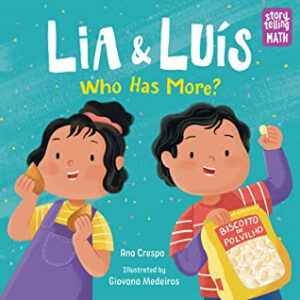 For Pre-Kindergarten, the Mathical Award Winner is Lia & Luís: Who Has More?, by Ana Crespo (Charlesbridge).
A brother and sister argue about who has the most snacks. They try counting and different ways of measuring the snacks to decide who really has more. Sometimes having the most is not having more.
For Pre-Kindergarten, the Mathical Award Winner is Lia & Luís: Who Has More?, by Ana Crespo (Charlesbridge).
A brother and sister argue about who has the most snacks. They try counting and different ways of measuring the snacks to decide who really has more. Sometimes having the most is not having more.
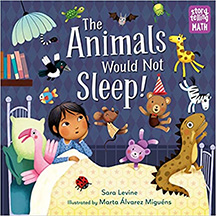 For Grades K–2, the Mathical Award Winner is The Animals Would Not Sleep, by Sara Levine (Charlesbridge).
Marco has a problem. It’s time for him to get ready for bed, but his stuffed animals are not ready. There’s always one that is unhappy no matter how he categorizes them. Will they ever be satisfied so he can go to sleep?
For Grades K–2, the Mathical Award Winner is The Animals Would Not Sleep, by Sara Levine (Charlesbridge).
Marco has a problem. It’s time for him to get ready for bed, but his stuffed animals are not ready. There’s always one that is unhappy no matter how he categorizes them. Will they ever be satisfied so he can go to sleep?
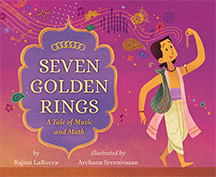 For Grades 3–5, the Mathical Award Winner is Seven Golden Rings: A Tale of Music and Math, by Rajani LaRocca (Lee & Low Books).
Bhagat wants to win the opportunity sing at the Rajah’s court. He must solve a math problem in order to make his family’s resources last until he can sing for the Rajah. In the end it is Bhagat’s math abilities not his musical talents that impress the Rajah.
For Grades 3–5, the Mathical Award Winner is Seven Golden Rings: A Tale of Music and Math, by Rajani LaRocca (Lee & Low Books).
Bhagat wants to win the opportunity sing at the Rajah’s court. He must solve a math problem in order to make his family’s resources last until he can sing for the Rajah. In the end it is Bhagat’s math abilities not his musical talents that impress the Rajah.
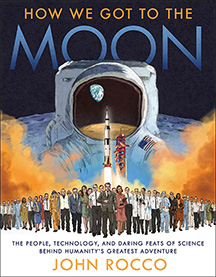 For Grades 6–8, the Mathical Award Winner is How We Got to the Moon: The People, Technology, and Daring Feats of Science Behind Humanity’s Greatest Adventure, by John Rocco (Crown Books)
This amazing expository book explains the science behind the Apollo 11 Space Mission and introduces some of the people whose work contributed to the first lunar landing.
For Grades 6–8, the Mathical Award Winner is How We Got to the Moon: The People, Technology, and Daring Feats of Science Behind Humanity’s Greatest Adventure, by John Rocco (Crown Books)
This amazing expository book explains the science behind the Apollo 11 Space Mission and introduces some of the people whose work contributed to the first lunar landing.
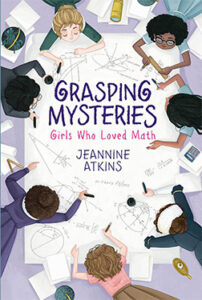 For Grades 9–12, the Mathical Award Winner is Grasping Mysteries: Girls Who Loved Math, by Jeannine Atkins (Simon & Schuster)
This thoroughly researched, elegantly written collective biography-in-verse introduces seven women who used math to make major contributions to the world. The biographical subjects include Caroline Herschel, Vera Rubin, Florence Nightingale, Hertha Marks Ayrton, Marie Tharp, Katherine Johnson, and Edna Lee Paisano.
For Grades 9–12, the Mathical Award Winner is Grasping Mysteries: Girls Who Loved Math, by Jeannine Atkins (Simon & Schuster)
This thoroughly researched, elegantly written collective biography-in-verse introduces seven women who used math to make major contributions to the world. The biographical subjects include Caroline Herschel, Vera Rubin, Florence Nightingale, Hertha Marks Ayrton, Marie Tharp, Katherine Johnson, and Edna Lee Paisano.
2021 Winners
 For Pre-Kindergarten, the Mathical Award Winner is Lia & Luís: Who Has More?, by Ana Crespo (Charlesbridge).
A brother and sister argue about who has the most snacks. They try counting and different ways of measuring the snacks to decide who really has more. Sometimes having the most is not having more.
For Pre-Kindergarten, the Mathical Award Winner is Lia & Luís: Who Has More?, by Ana Crespo (Charlesbridge).
A brother and sister argue about who has the most snacks. They try counting and different ways of measuring the snacks to decide who really has more. Sometimes having the most is not having more.
 For Grades K–2, the Mathical Award Winner is The Animals Would Not Sleep, by Sara Levine (Charlesbridge).
Marco has a problem. It’s time for him to get ready for bed, but his stuffed animals are not ready. There’s always one that is unhappy no matter how he categorizes them. Will they ever be satisfied so he can go to sleep?
For Grades K–2, the Mathical Award Winner is The Animals Would Not Sleep, by Sara Levine (Charlesbridge).
Marco has a problem. It’s time for him to get ready for bed, but his stuffed animals are not ready. There’s always one that is unhappy no matter how he categorizes them. Will they ever be satisfied so he can go to sleep?
 For Grades 3–5, the Mathical Award Winner is Seven Golden Rings: A Tale of Music and Math, by Rajani LaRocca (Lee & Low Books).
Bhagat wants to win the opportunity sing at the Rajah’s court. He must solve a math problem in order to make his family’s resources last until he can sing for the Rajah. In the end it is Bhagat’s math abilities not his musical talents that impress the Rajah.
For Grades 3–5, the Mathical Award Winner is Seven Golden Rings: A Tale of Music and Math, by Rajani LaRocca (Lee & Low Books).
Bhagat wants to win the opportunity sing at the Rajah’s court. He must solve a math problem in order to make his family’s resources last until he can sing for the Rajah. In the end it is Bhagat’s math abilities not his musical talents that impress the Rajah.
 For Grades 6–8, the Mathical Award Winner is How We Got to the Moon: The People, Technology, and Daring Feats of Science Behind Humanity’s Greatest Adventure, by John Rocco (Crown Books)
This amazing expository book explains the science behind the Apollo 11 Space Mission and introduces some of the people whose work contributed to the first lunar landing.
For Grades 6–8, the Mathical Award Winner is How We Got to the Moon: The People, Technology, and Daring Feats of Science Behind Humanity’s Greatest Adventure, by John Rocco (Crown Books)
This amazing expository book explains the science behind the Apollo 11 Space Mission and introduces some of the people whose work contributed to the first lunar landing.
 For Grades 9–12, the Mathical Award Winner is Grasping Mysteries: Girls Who Loved Math, by Jeannine Atkins (Simon & Schuster)
This thoroughly researched, elegantly written collective biography-in-verse introduces seven women who used math to make major contributions to the world. The biographical subjects include Caroline Herschel, Vera Rubin, Florence Nightingale, Hertha Marks Ayrton, Marie Tharp, Katherine Johnson, and Edna Lee Paisano.
For Grades 9–12, the Mathical Award Winner is Grasping Mysteries: Girls Who Loved Math, by Jeannine Atkins (Simon & Schuster)
This thoroughly researched, elegantly written collective biography-in-verse introduces seven women who used math to make major contributions to the world. The biographical subjects include Caroline Herschel, Vera Rubin, Florence Nightingale, Hertha Marks Ayrton, Marie Tharp, Katherine Johnson, and Edna Lee Paisano.
